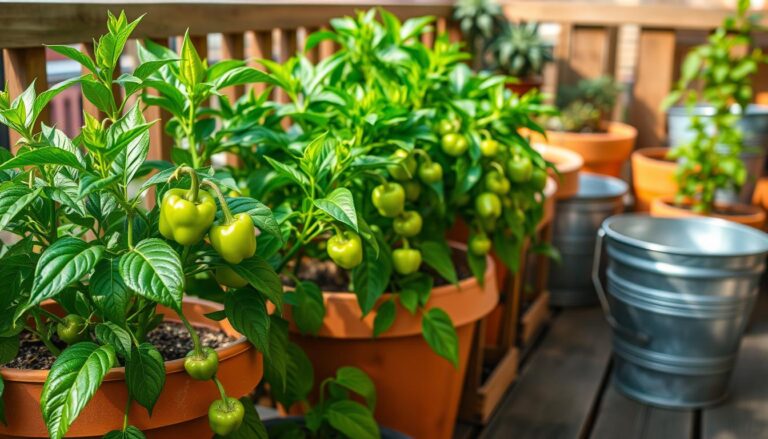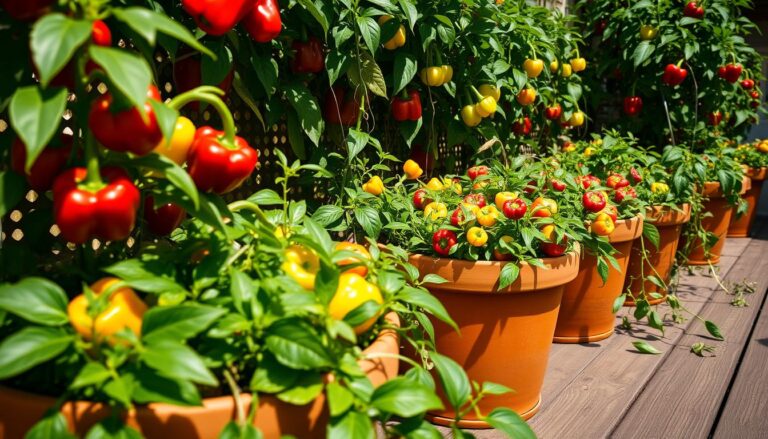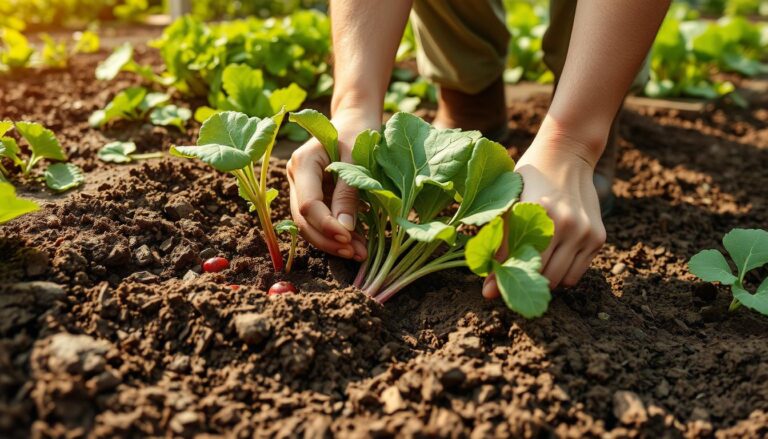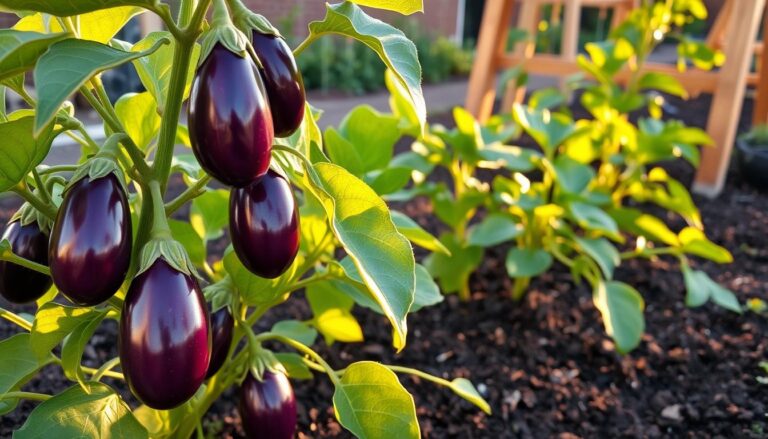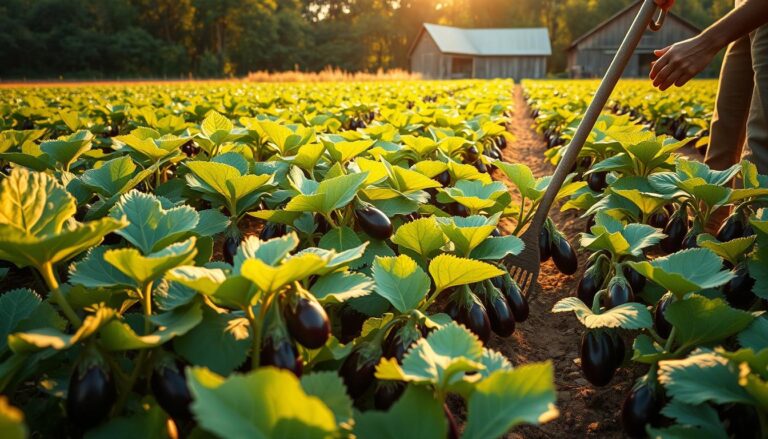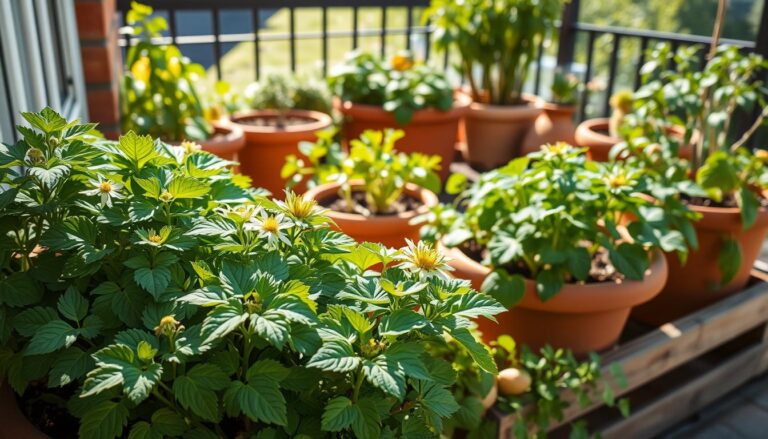Growing Bell Peppers in Pots: A Beginner’s Guide
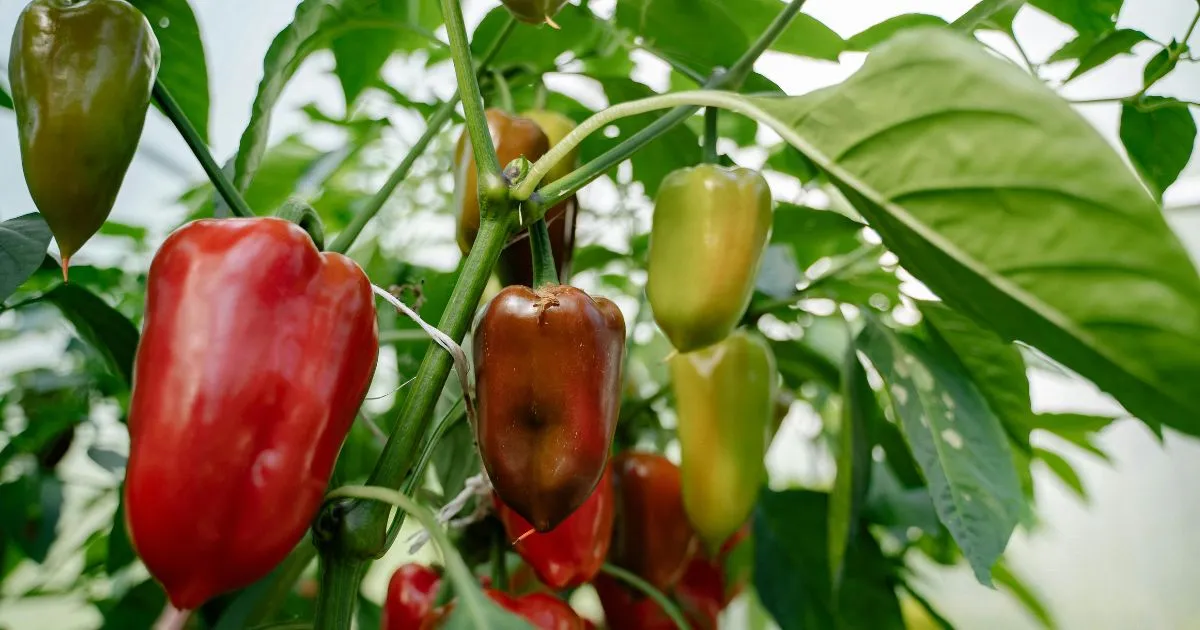
Table of Contents
Growing Bell Peppers in Pots: A Beginner’s Guide
Are you into container gardening with peppers? You’re not alone. Many gardeners choose container gardening for its space-saving benefits. It lets you control soil, temperature, and moisture, leading to healthier plants and more peppers.
Container gardening peppers can be very rewarding. It brings fresh, tasty peppers right to your backyard or patio. With the right tips, you can have a successful harvest and enjoy your container garden.
Key Takeaways
- Choose a container that is at least 5-gallons to ensure adequate root growth.
- Select a well-draining potting mix to prevent waterlogged soil.
- Pepper plants require full sun, so choose a location that receives at least 6 hours of direct sunlight.
- Fertilize your pepper plants regularly for optimal growth.
- Keep the soil consistently moist, but not waterlogged.
- Monitor your plants for signs of pests or disease.
Benefits of Container Gardening for Peppers
Container gardening is great for growing peppers, especially for those with little space. It saves space, makes moving plants easy, and helps control pests and diseases.
Space Efficiency for Urban Gardeners
Urban gardeners with small spaces find container gardening perfect. It lets you use every inch of space, like balconies or small yards. You can grow many pepper plants without a big garden.
Mobility and Season Extension
Containers let you move pepper plants for better sunlight and warmth. This flexibility extends the growing season. For example, move plants to sunnier spots in cooler months or to shade in the summer.
Pest and Disease Management Advantages
Container gardening makes pest and disease control easier. It keeps pests like slugs away and lets you check plants often. Using clean potting mix also helps prevent soil diseases.
| Benefit | Description |
|---|---|
| Space Efficiency | Ideal for urban gardeners, making the most of available space. |
| Mobility | Allows for relocation based on sunlight and temperature. |
| Pest and Disease Management | Simplifies management by elevating plants and using sterilized potting mix. |
Choosing the Right Containers and Soil
Choosing the right containers and soil is key for growing peppers in pots. The right mix can greatly affect your pepper plants’ health and yield.
Optimal Pot Size for Pepper Plants
The size of the container is crucial for pepper plants to grow well. A minimum of 5 gallons is needed for most varieties. This size allows for enough room for the roots to grow.
Container Materials: Pros and Cons
Different materials have their own benefits and drawbacks. For instance, plastic pots are light and cheap but not as durable as clay or ceramic. Here’s a look at some common materials:
| Material | Pros | Cons |
|---|---|---|
| Plastic | Lightweight, inexpensive | Less durable |
| Clay/Ceramic | Durable, aesthetically pleasing | Heavier, more expensive |
| Wood | Natural look, can be durable | May rot if not treated |
Soil Composition for Container Peppers
A good potting mix is vital for container peppers. It should be rich in organic matter and have a pH between 6.0 and 7.0.
Drainage Requirements for Healthy Growth
Good drainage is crucial to avoid waterlogged soil. This can cause root rot. Make sure your containers have enough holes for healthy root growth.
Best Pepper Varieties for Growing in Pots
Looking to grow peppers in containers? Pick a variety that thrives in pots. Peppers vary in shape, size, and heat, making them great for containers.
Compact Bell Pepper Varieties
Compact bell peppers are perfect for pots. They grow small and produce lots of peppers. Some top picks are:
- ‘Patio’
- ‘Thai Sweet’
- ‘Baby Belle’
These peppers are sweet and crunchy. They’re great for snacking and salads.
Hot Pepper Options for Containers
For those who enjoy spice, hot peppers are a good choice. Some favorites include:
- ‘Thai Hot’
- ‘Bird’s Eye’
- ‘Salsa Del Sol’
These peppers add a spicy flavor. They’re perfect for fresh dishes or drying.
Ornamental Peppers with Edible Fruits
Ornamental peppers are not just pretty. They also have edible fruits. Some favorites are:
- ‘Black Pearl’
- ‘Purple Flash’
- ‘Red Masquerade’
These peppers come in many colors. They add beauty to your container garden.
| Pepper Variety | Growth Habit | Fruit Characteristics |
|---|---|---|
| Patio | Compact | Sweet, 2-3 inches |
| Thai Hot | Upright | Hot, 1-2 inches |
| Black Pearl | Compact | Ornamental, 1-2 inches |
Essential Tips for Growing Peppers in Pots
To grow peppers in pots, you need to know what they need. Growing peppers in containers can be rewarding if done right. There are a few key things to keep in mind.
Starting Seeds vs. Using Transplants
You can start pepper seeds in pots or use transplants. Starting seeds lets you control the growing conditions better. Choose healthy transplants with strong stems and green leaves.
Watering Techniques for Container Peppers
Watering is key for container peppers. Check the soil moisture by feeling it with your finger. Water when the top inch is dry. Don’t overwater to avoid root rot.
Fertilizing Schedule and Requirements
Pepper plants in pots need regular fertilizer. Use a balanced fertilizer (like 10-10-10 NPK) once a month. You can also use a high-phosphorus fertilizer to help with fruiting.
Sunlight and Temperature Management
Peppers need full sun to grow well. Place your pots in a spot that gets at least 6 hours of direct sunlight. Managing temperature is also important.
Heat Requirements for Optimal Growth
Peppers grow best in warm temperatures between 65°F and 85°F (18°C and 30°C). Avoid extreme temperature changes.
Protecting Plants from Temperature Extremes
To protect pepper plants from extreme temperatures, use row covers or bring pots under cover. Monitor weather forecasts to prepare for temperature changes.
| Factor | Requirement | Tips |
|---|---|---|
| Pot Size | At least 5-gallon capacity | Ensure good drainage holes |
| Watering | Keep soil moist | Avoid overwatering |
| Fertilization | Balanced fertilizer monthly | Side-dress with high-phosphorus fertilizer |
| Sunlight | At least 6 hours direct sunlight | Place in sunny location |
| Temperature | 65°F to 85°F (18°C to 30°C) | Protect from extremes |
By following these tips, you can enjoy a healthy and productive pepper harvest from your pots.
Troubleshooting Common Container Pepper Problems
When growing peppers in containers, watch out for pollination issues and pests. Container gardening has many perks but also unique challenges. These can affect your pepper plants’ health and yield.
Identifying and Treating Pest Issues
Pests like aphids, spider mites, and whiteflies can harm growing peppers in pots. Regularly check your plants for pests. Use organic methods like neem oil or insecticidal soap to fight them.
Disease Prevention in Potted Peppers
Diseases can spread fast in container gardens if not controlled. To stop disease, make sure plants have good air flow. Don’t overwater and remove any sick plants or debris. Peppers often get fungal infections and bacterial leaf spot.
Addressing Nutrient Deficiencies
Nutrient shortages can hurt pepper plant health. Peppers need a mix of nitrogen, phosphorus, and potassium. Fertilizing them often with a balanced fertilizer can prevent this.
Pollination Challenges and Solutions
Peppers can pollinate themselves but need a little help, especially in containers. To help pollination, gently shake your plants or use a small brush to move pollen between flowers.
Growing Peppers in Pots: A Rewarding Experience
By following the tips and guidelines in this article, you can grow peppers in pots successfully. Container gardening lets you control the soil, moisture, and sunlight. This results in healthier and more productive plants.
When growing bell peppers in pots, choose a container that’s at least 12 inches deep. Make sure it has good drainage holes. Use a well-draining potting mix and fertilize your plants regularly. With proper care, you’ll enjoy a delicious harvest of homegrown peppers.
Container gardening peppers is a great way to add greenery to your outdoor space. It also lets you enjoy the benefits of homegrown produce. By using the techniques and strategies from this article, you can become a successful container gardener. Enjoy the rewards of growing your own peppers.
FAQ
What is the ideal pot size for growing peppers in containers?
For growing peppers in containers, choose pots that are at least 5-7 gallons. Make sure they are 12 inches deep to support the roots.
Can I use any type of container for growing peppers?
You can use different containers, but pick ones with good drainage. They should also be made of durable material to handle outdoor weather.
How often should I water my pepper plants in containers?
Water your pepper plants when the top 1-2 inches of soil feels dry. This is usually every 2-3 days, depending on the weather.
What is the best soil composition for container peppers?
Use a potting mix that drains well and has balanced fertilizer. The pH should be between 6.0 and 6.8 for container peppers.
How much sunlight do pepper plants need when grown in containers?
Pepper plants need at least 6 hours of direct sunlight daily. More sunlight is good in cooler climates.
Can I grow hot peppers and sweet peppers in the same container?
You can grow multiple pepper plants together. But, it’s best to separate hot and sweet peppers. This prevents flavor transfer and cross-pollination.
How do I fertilize my pepper plants in containers?
Feed your pepper plants with a balanced fertilizer once a month. Consider adding a high-phosphorus fertilizer to help with fruiting.
What are some common pests that can affect pepper plants in containers?
Aphids, whiteflies, and spider mites can harm pepper plants. Use organic pest control methods to manage these pests.
How can I prevent disease in my container pepper plants?
Prevent disease by ensuring good air circulation and removing infected plants. Treat with fungicides if needed. Keep good hygiene and watering practices.

